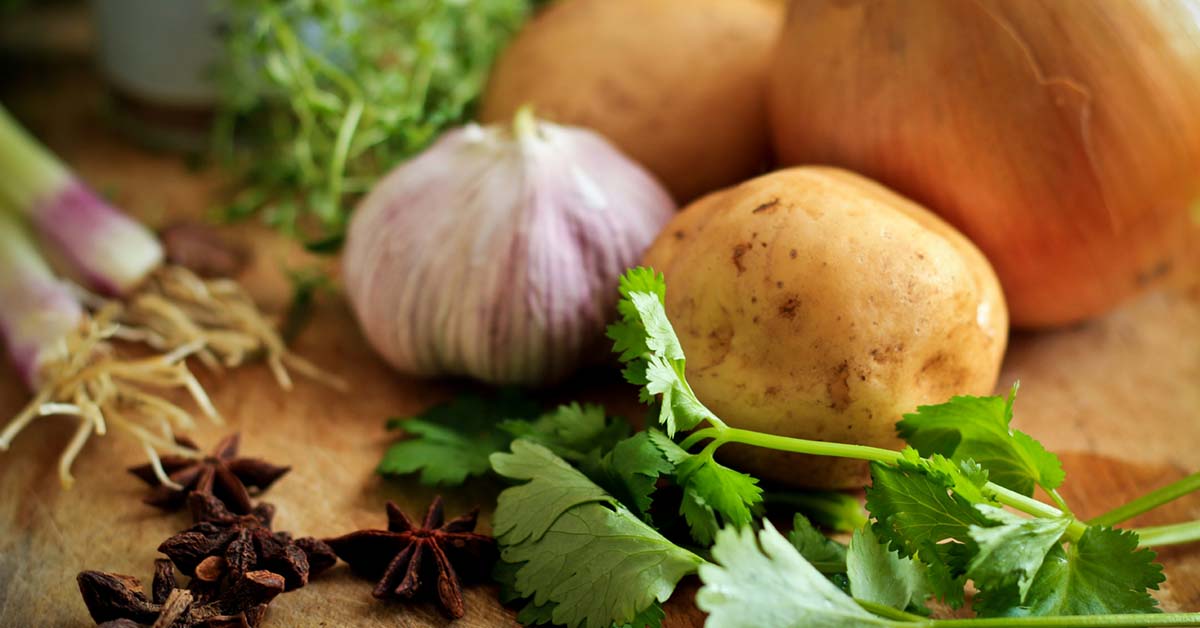Want to make your meals taste amazing? It all starts with fresh ingredients! Think of them as the building blocks of deliciousness. Whether you’re a kitchen newbie or a seasoned chef, using fresh ingredients can take your cooking to the next level. Let’s dive into why they matter and how to choose the best ones.
Why Are Fresh Ingredients Important?
You might wonder, “Why bother with fresh when I can use canned or frozen?” Here’s why fresh is king:
1. Better Flavor
Fresh ingredients have a vibrant, natural taste that processed foods simply can’t match. Imagine the difference between a ripe, juicy tomato and a canned one – the flavor speaks for itself!
2. More Nutrients
Fresh produce is packed with vitamins and minerals. The longer food sits, the more nutrients it loses. So, eating fresh means you’re getting the most nutritional bang for your buck.
3. Improved Texture
Fresh ingredients offer a delightful texture that enhances the overall eating experience. Think crisp vegetables, tender meats, and fragrant herbs.
4. Healthier Meals
When you cook with fresh ingredients, you’re less likely to rely on added sugars, salts, and preservatives found in processed foods.
5. Supports Local Farmers
Buying fresh produce from farmers’ markets or local stores helps support your community and reduces your environmental footprint.
How to Choose the Best Fresh Ingredients
Knowing what to look for is key. Here are some tips to help you pick the freshest ingredients:
Fruits and Vegetables
- Look for Vibrant Colors: Bright colors often indicate freshness and ripeness.
- Check for Firmness: Avoid fruits and vegetables that are soft, mushy, or have bruises.
- Smell Them: Ripe fruits and vegetables have a distinct, pleasant aroma.
- Consider Seasonal Produce: Seasonal produce is usually fresher and more flavorful.
- Check for Signs of Damage: Avoid produce with cuts, mold, or insect damage.
- Leafy Greens: Look for crisp, bright leaves. Avoid wilted or yellowing greens.
Meat and Poultry
- Color is Key: Fresh meat should have a vibrant, natural color. For example, beef should be bright red, and chicken should be pinkish-white.
- Feel the Texture: Fresh meat should feel firm and springy, not slimy or sticky.
- Check the Smell: Fresh meat should have a mild, clean smell. Avoid meat with a strong or unpleasant odor.
- Look for Proper Packaging: Ensure the meat is properly sealed and refrigerated.
- Check the Date: Always check the “use by” or “sell by” date.
Fish and Seafood
- Smell the Sea: Fresh fish should smell like the ocean, not fishy.
- Look for Clear Eyes: Fresh fish should have bright, clear eyes.
- Check the Gills: The gills should be bright red or pink.
- Feel the Flesh: Fresh fish should feel firm and springy.
- Buy from Reputable Sources: Choose fish from a trusted fishmonger or market.
Herbs and Spices
- Fresh Herbs: Look for vibrant green leaves and avoid wilted or brown spots. Smell them—fresh herbs have a strong, distinct aroma.
- Dried Herbs and Spices: Check the expiration date and look for a strong aroma. Buy them in small quantities to ensure freshness.
Common Problems and Solutions When Using Fresh Ingredients
Even with the best intentions, you might encounter some challenges. Here’s how to tackle them:
Problem: Produce Spoiling Quickly
Solution: Store produce properly. For example, keep leafy greens in the refrigerator in a plastic bag with a damp paper towel. Store fruits and vegetables separately, as some fruits release ethylene gas that can cause other produce to ripen too quickly.
Problem: Meat Going Bad Before Cooking
Solution: Freeze meat if you’re not going to use it within a few days. Thaw it safely in the refrigerator or using the defrost setting on your microwave.
Problem: Herbs Wilting
Solution: Store fresh herbs like cut flowers in a glass of water in the refrigerator. Or, wrap them in a damp paper towel and store them in a plastic bag.
Problem: Not Knowing How to Use Unfamiliar Ingredients
Solution: Do some research! Look up recipes and cooking techniques online or in cookbooks. Don’t be afraid to experiment!
Simple Recipes to Get You Started
Here are a few easy recipes to help you practice using fresh ingredients:
Simple Salad
- Combine fresh lettuce, tomatoes, cucumbers, and bell peppers.
- Drizzle with olive oil and lemon juice.
- Add salt and pepper to taste.
Grilled Chicken with Roasted Vegetables
- Season chicken breasts with salt, pepper, and herbs.
- Grill the chicken until cooked through.
- Roast vegetables like broccoli, carrots, and potatoes with olive oil and seasonings.
Fruit Smoothie
- Blend fresh fruits like berries, bananas, and mangoes with yogurt or milk.
- Add a handful of spinach or kale for extra nutrients.
Tips for Making the Most of Fresh Ingredients
- Plan Your Meals: Planning your meals helps you buy only what you need, reducing waste.
- Shop Regularly: Frequent trips to the grocery store or farmers’ market ensure you’re getting the freshest ingredients.
- Use Herbs Generously: Fresh herbs add a burst of flavor to any dish.
- Don’t Be Afraid to Experiment: Try new recipes and combinations of fresh ingredients.
- Store Ingredients Properly: Proper storage extends the shelf life of fresh ingredients.
- Learn Basic Knife Skills: Good knife skills make preparing fresh ingredients easier and faster.
- Use a Vegetable Peeler: A peeler makes quick work of preparing vegetables.
Conclusion
By using fresh ingredients for cooking, you’ll create meals that are not only delicious but also healthy and satisfying. So, get out there, explore your local markets, and start cooking with the best nature has to offer!


